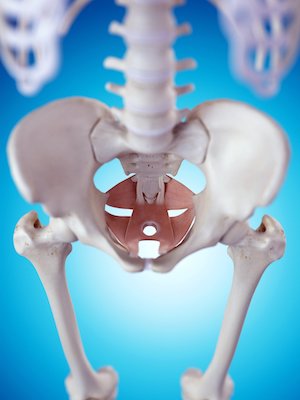
I published an article in 2020, around my discovery of engaging the pelvic floor in resonance breathing. According to my personal testing, compared to breathing alone it can enhance HRV resonance by 200 percent! Josef Tatschl, a research colleague in Austria, has also been working on this topic (he was apparently working on it before my discovery, but had not published yet). I’m hoping he will help get more answers that are needed to fully understand the phenomena.
Lowenfels (2020). Recruiting the Pelvic Floor to Enhance HRV Biofeedback.
During breathing, the respiratory diaphragm contracts down on the inhale and relaxes up on the exhale. Normally, the pelvic diaphragm relaxes down on the inhale and contracts up on the exhale. This constitutes a mirroring action, where both diaphgrams move upwards or downwards in synchrony. Consider the natural movements that happen when coughing: normally, the pelvic floor should contract upwards along with the abdominal muscles, as the respiratory diaphgram relaxes upwards.
Resonance breathing activates vagal afferent circuits and pumps blood into the brain through bioacoustics. On the inhale, the cardiac baroreceptors are pressurized, resulting in a temporary lifting of the cardiovagal brake. By contracting the pelvic floor on the inhale, the cardiovagal brake is also temporarily lifted. I am unclear if this is because the cardiac baroreceptors are further pressurized by changes in abdominal pressure, or if some other sensorimotor mechanism occurs due to nerves firing in the abdominal muscles.
However, the end result is that including thoracic and pelvic diaphgrams are synergistic to the changes in heart rate during resonance breathing. It is also possible to hold the breath and create HRV resonance purely by rhythmic contractions of the pelvic floor (i.e. at 5.5 to 6 per minute).
Here is a video of me demonstrating the technique, with both cardiovagal and neurovascular resonance frqeuencies
Some interesting references on the diaphgram:
- Bordoni & Zanier (2013). Anatomic connections of the diaphragm: influence of respiration on the body system.
- Kocjan et al. (2017). Network of breathing. Multifunctional role of the diaphragm: a review.
- Bordoni (2017). Comment on: “Network of breathing. Multifunctional role of the diaphragm: a review”